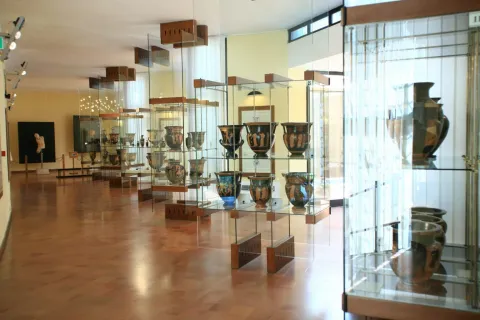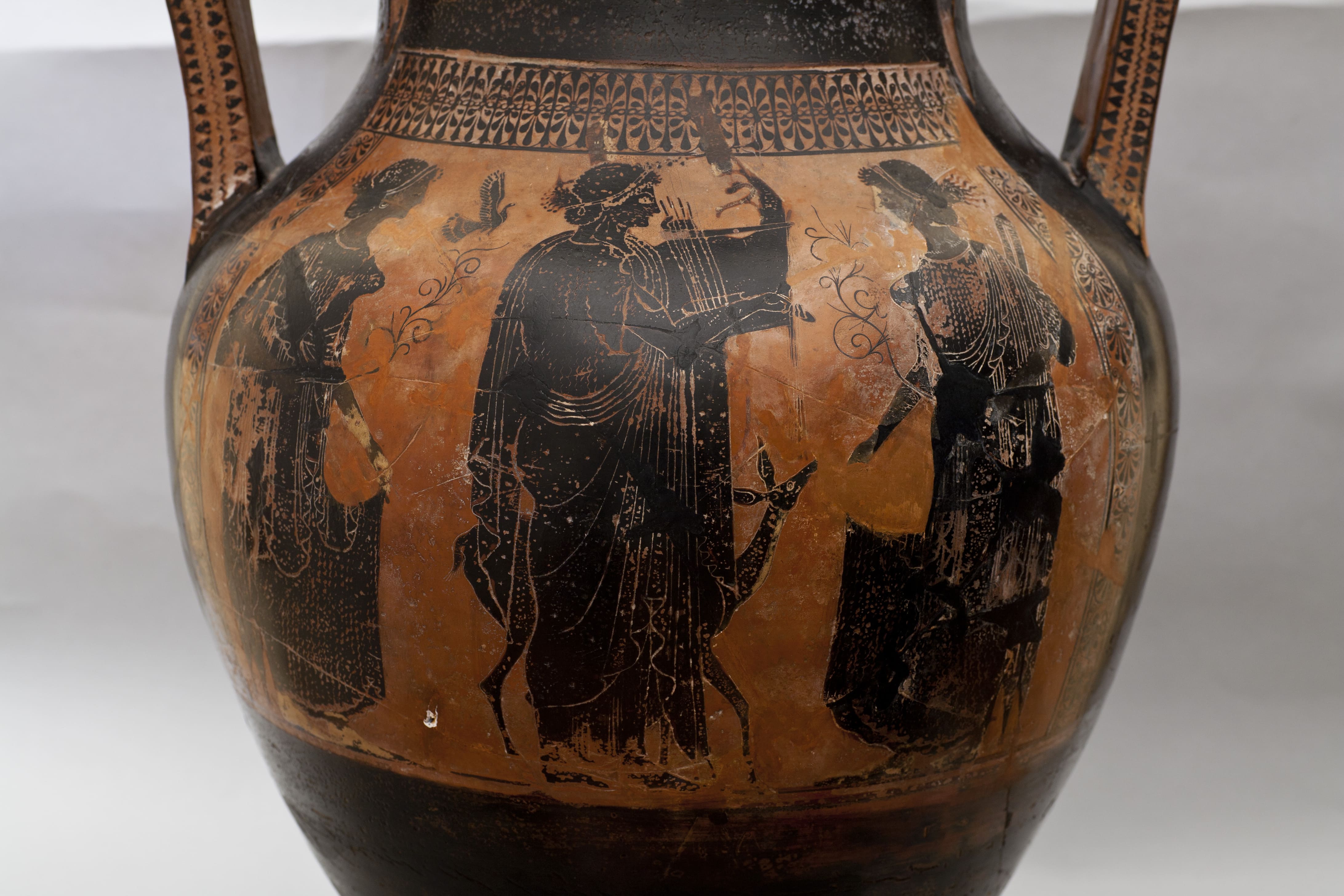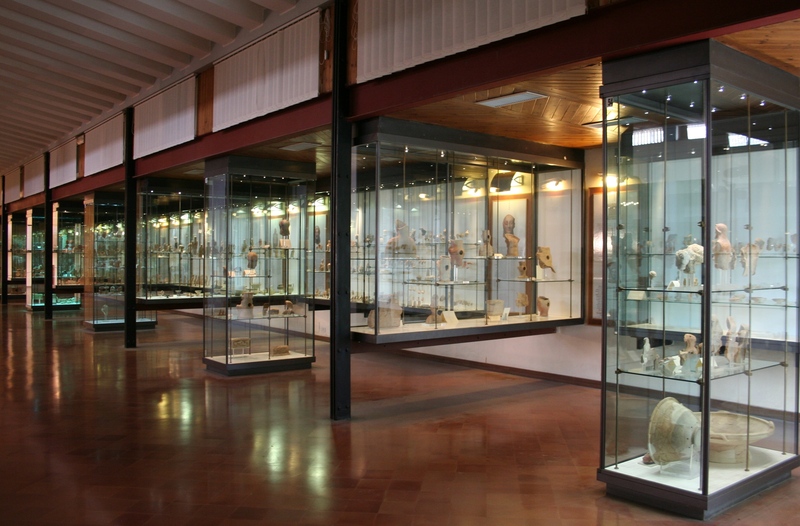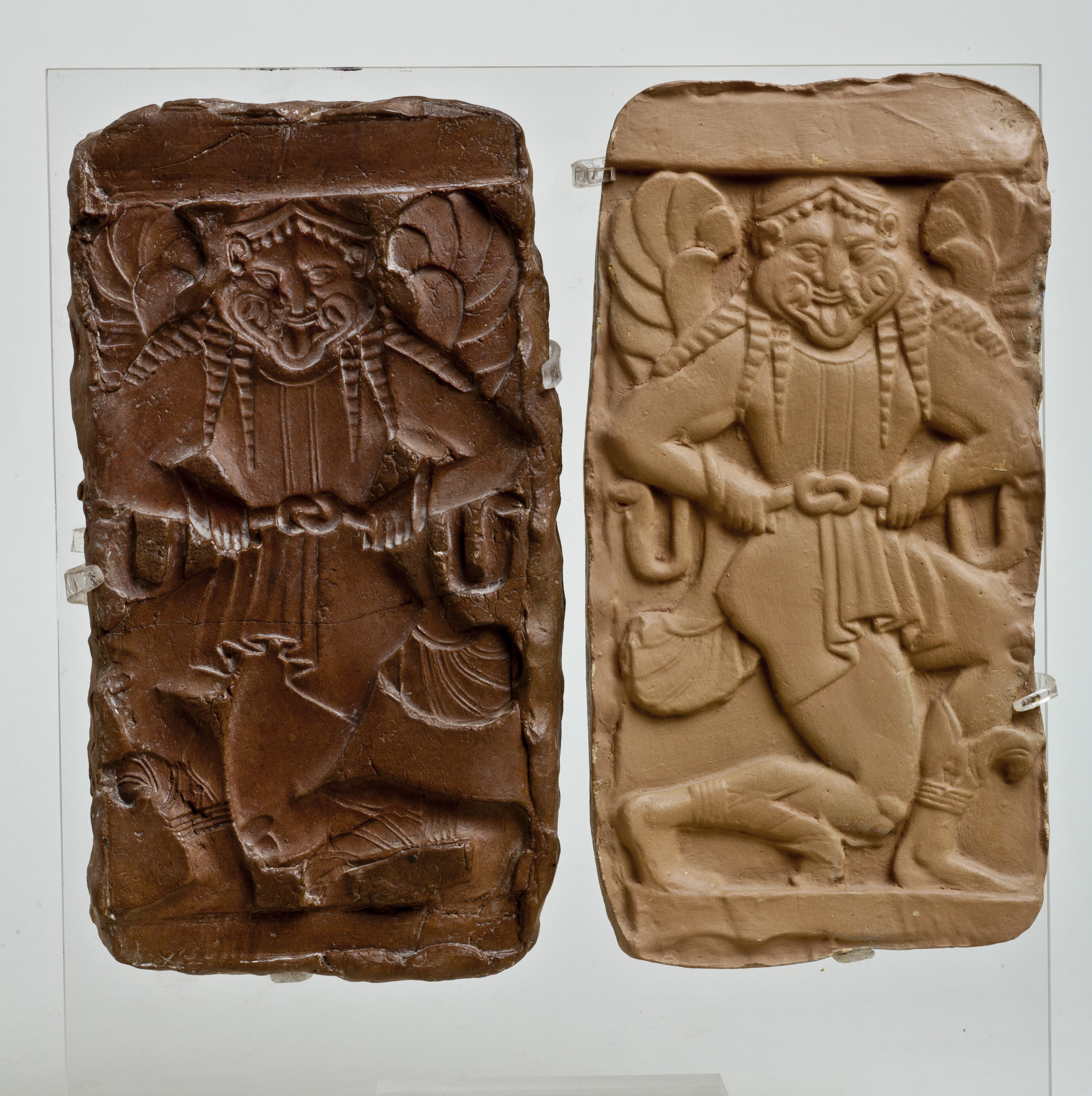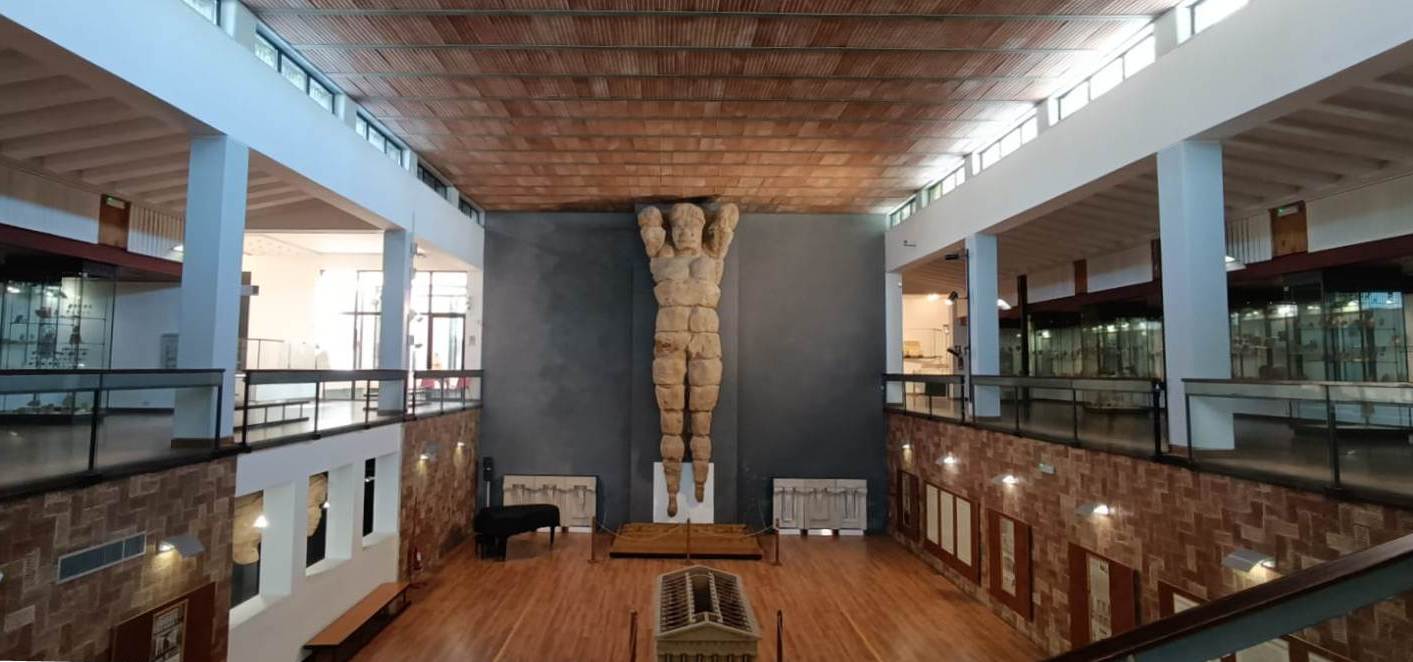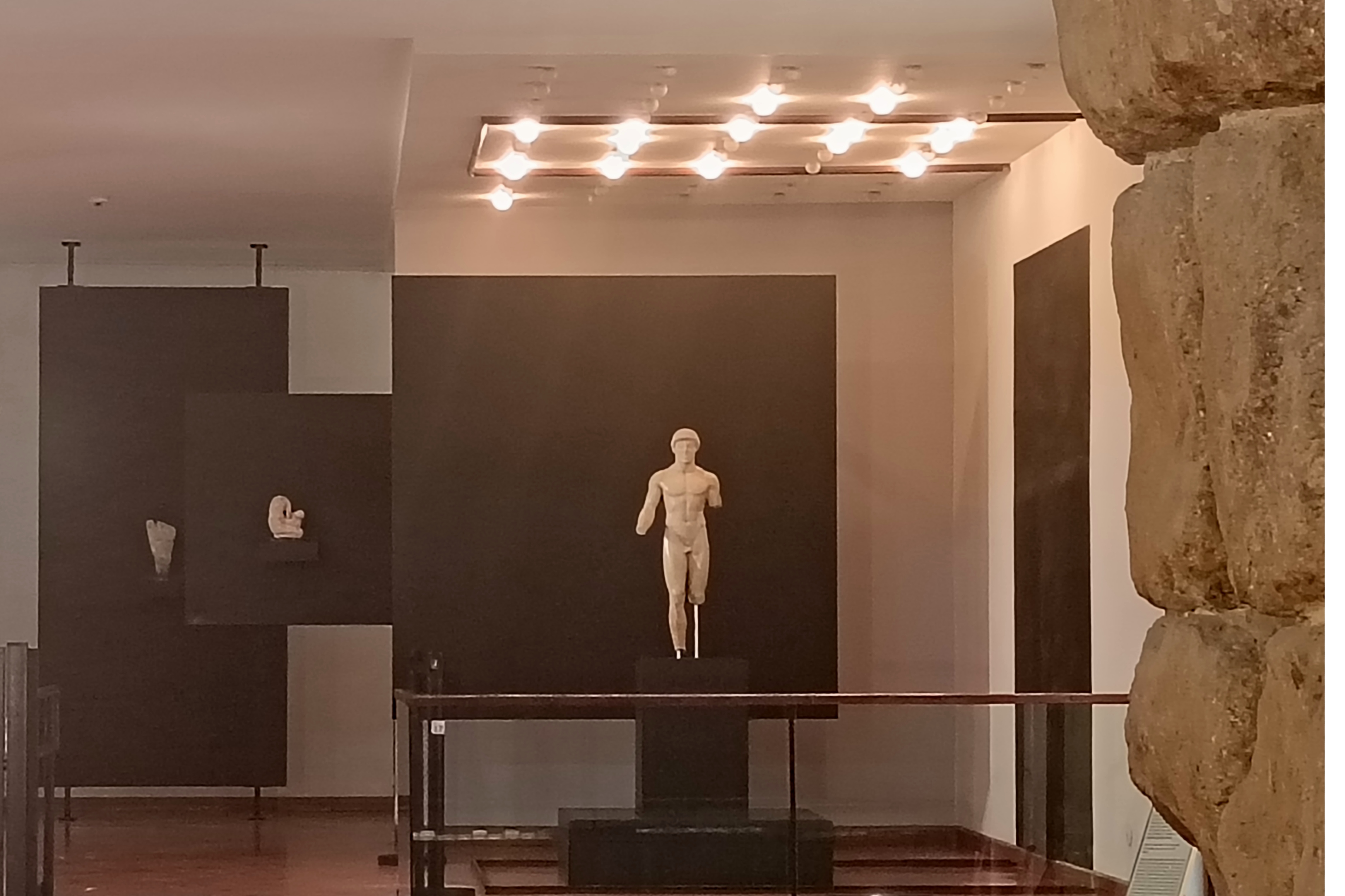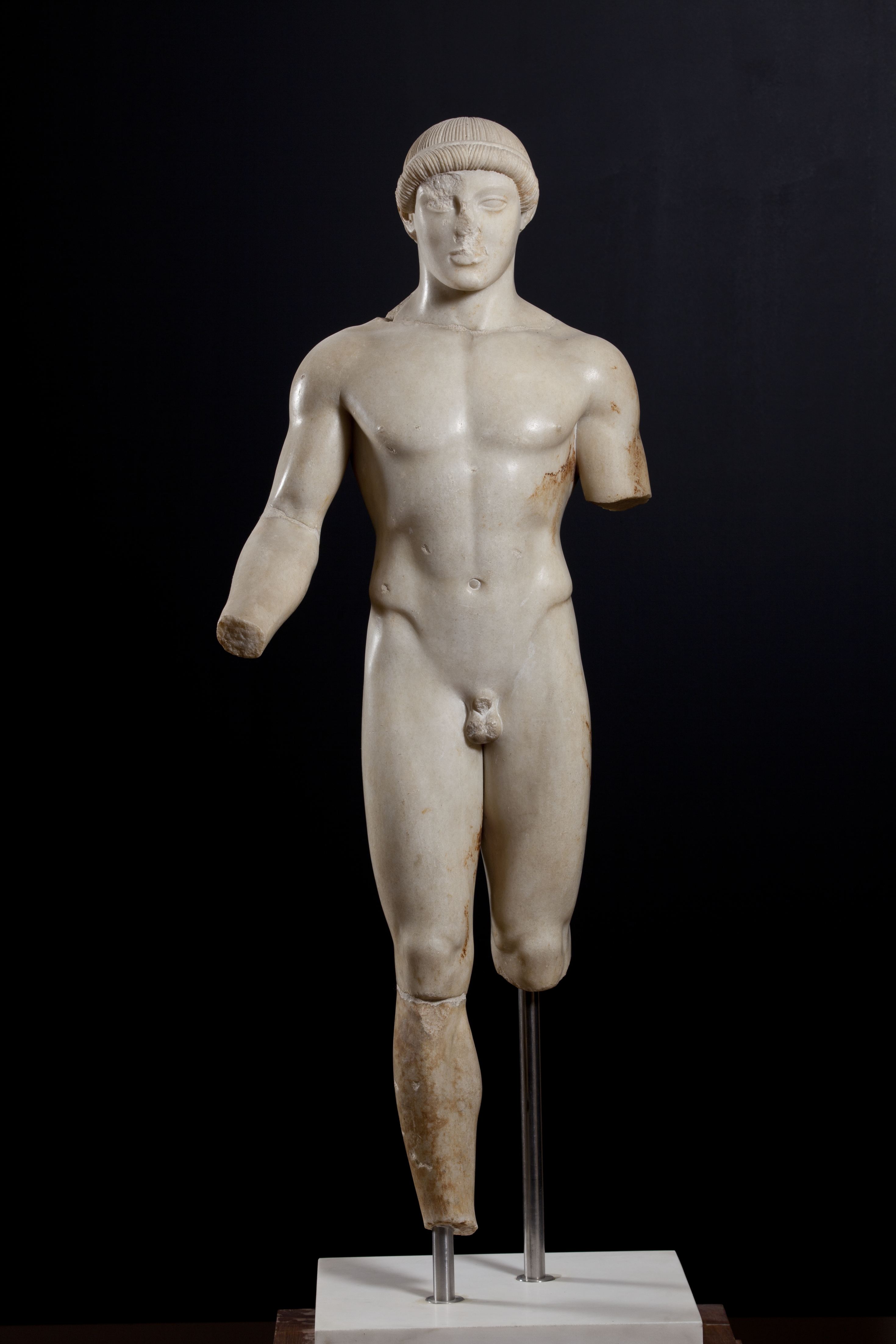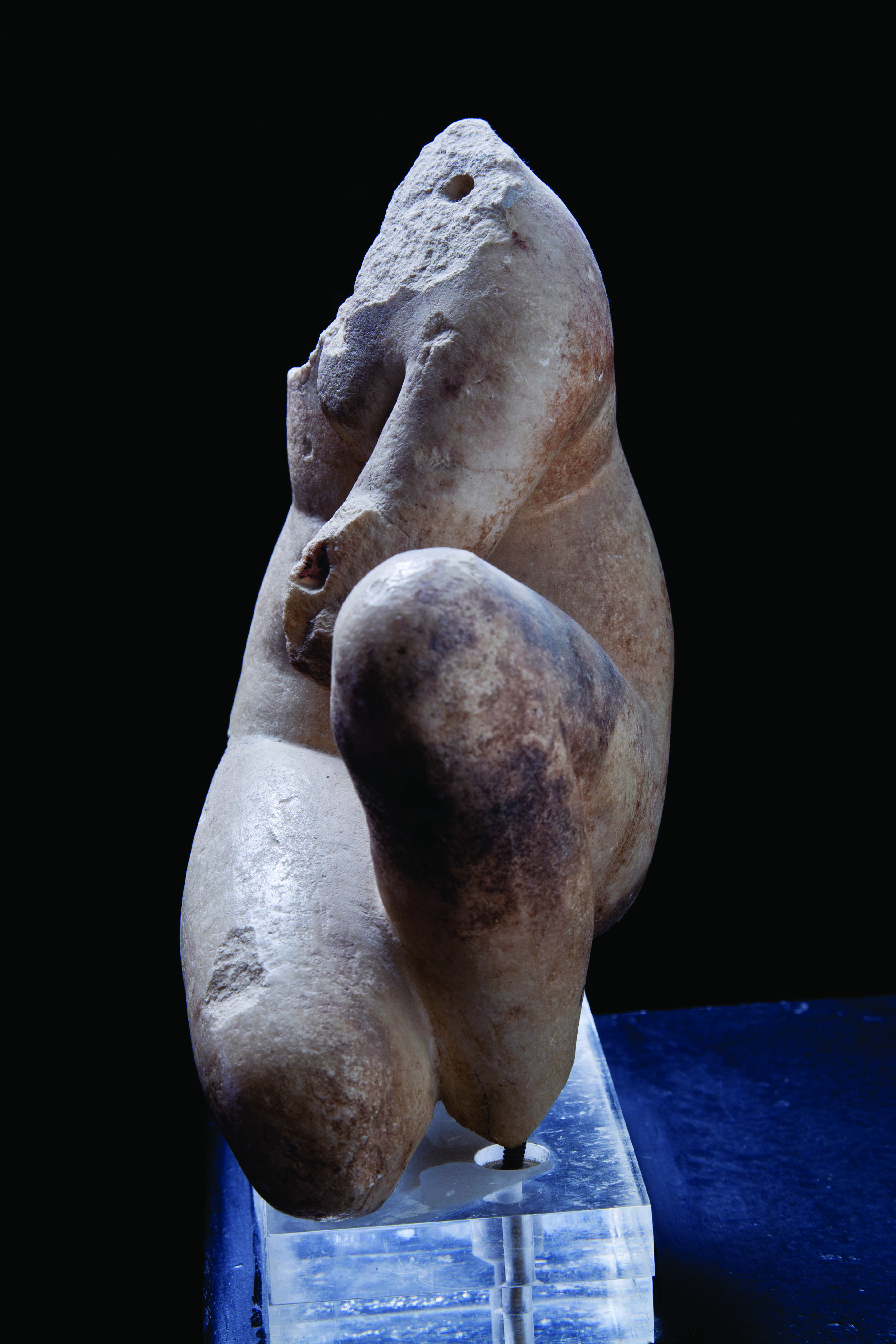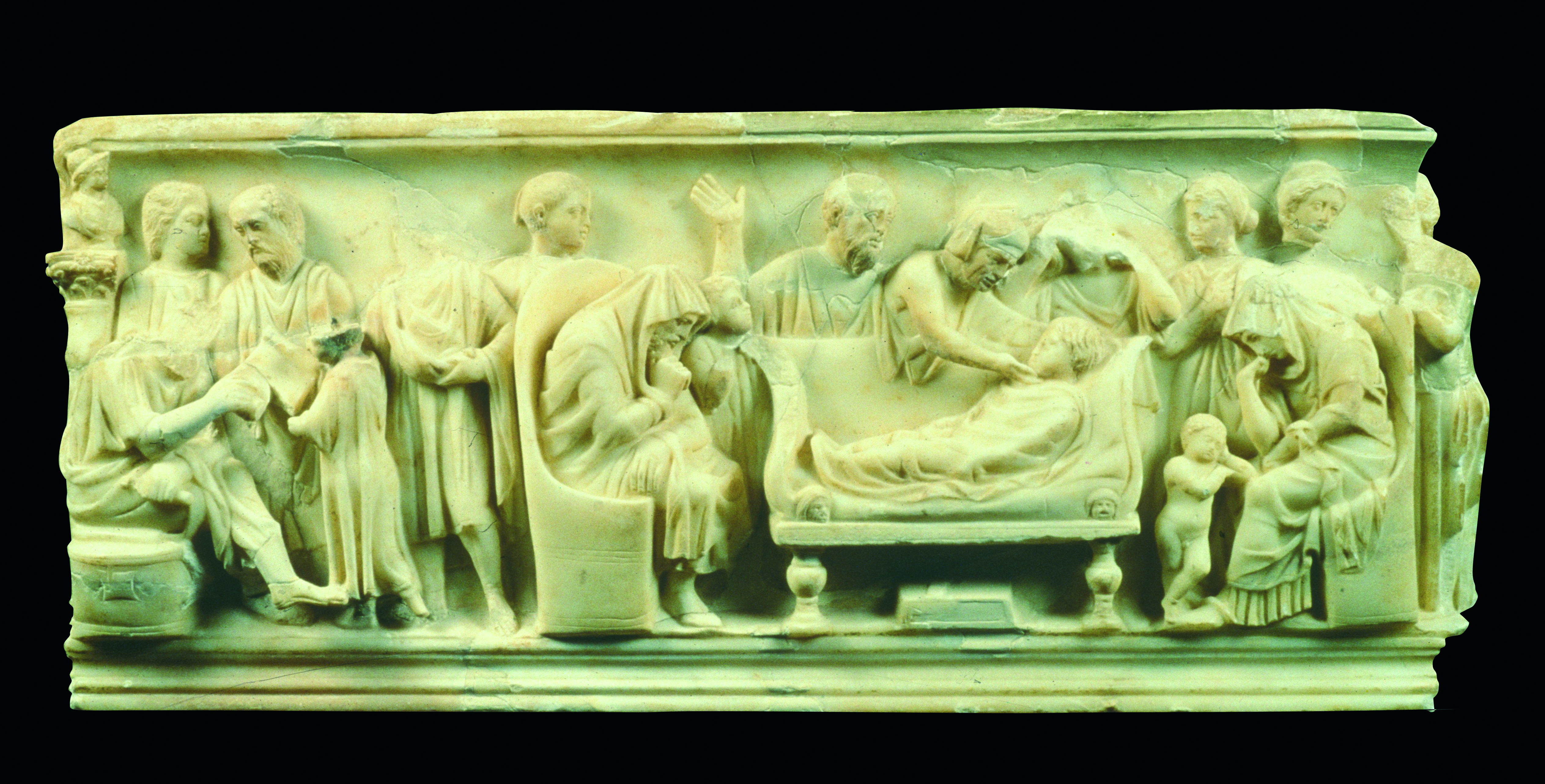Artistic and artisanal evolution from prehistoric times to the early Middle Ages. Ceramics, sanctuaries, and necropolises
The museum's centerpiece is Room VI, which houses one of the telamons from the Temple of Olympian Zeus, positioned vertically, as in its original context. This colossal telamon, more than 7 meters high, lay in pieces, supine inside the temple cell until the early 19th century, when it was reassembled, but exposure to the open air endangered its preservation due to the fragility of the stone material. To protect it, it was decided to transfer it to the museum hall, specially designed with a double height to accommodate it. This hall is scenographically surrounded by an upper level with display cases exhibiting artifacts from the sanctuaries, among which the devotional terracottas dedicated to Demeter and Persephone stand out.
The itinerary begins, however, with written sources on the ancient history of the territory and with finds that bear witness to the periods from prehistory to the Greek foundation.
One room is dedicated to ceramics, with a vast collection of vases that documents the evolution of Attic ceramography through the three main techniques: black figures, red figures, and white background. These are accompanied by examples of high artistic value produced in the main Italic workshops of Apulia, Campania, and Lucania.
The display of sima with lion-shaped gutters introduces the section on architecture and sanctuaries, including the temple of Zeus. The artifacts from the residential district with its regular urban layout, alongside a rich collection of coins, bear witness to the commercial exchanges of the ancient city.
The sculptures, including the famous marble statue of an ephebe from the Severan period, together with the gymnasium seat, which has been put on display after a recent restoration, and the funerary finds and sarcophagi from the necropolises surrounding the ancient walls, conclude the itinerary dedicated to the city.

